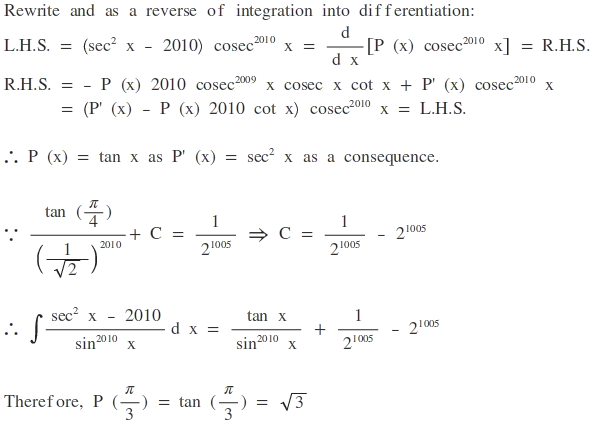5 years back
∫ sin 2 0 1 0 ( x ) sec 2 ( x ) − 2 0 1 0 d x = ( sin ( x ) ) 2 0 1 0 P ( x ) + C
If the equation above is true for some function P ( x ) with P ( 4 π ) = 2 1 0 0 5 1 , where C denotes the arbitrary constant, then find the value of P ( 3 π ) .
This section requires Javascript.
You are seeing this because something didn't load right. We suggest you, (a) try
refreshing the page, (b) enabling javascript if it is disabled on your browser and,
finally, (c)
loading the
non-javascript version of this page
. We're sorry about the hassle.
2 solutions
Can you explain what the " " symbol means in the integration?
Log in to reply
Oh actually I wanted to show the terms cancel out
Log in to reply
Ah. Unfortunately you will not be able to do a complete strikethrough using Latex (without having additional packages installed in our backend).
I've edited the problem. Can you edit your solution and indicate why that condition is necessary? IE point out what was incomplete in your solution. If you need help, look at Jake's report.
Just a slight thing to scare people from answering.

its simple
∫ ( sin x ) 2 0 1 0 sec 2 x d x − ∫ ( sin x ) 2 0 1 0 2 0 1 0 d x
In the former integral apply integration by parts considering ( sin x ) 2 0 1 0 1 as first function and sec 2 x as second
( sin x ) 2 0 1 0 tan x + ∫ ( sin x ) 2 0 1 0 2 0 1 0 d x − ∫ ( sin x ) 2 0 1 0 2 0 1 0 d x
so thus P ( x ) = tan ( x )